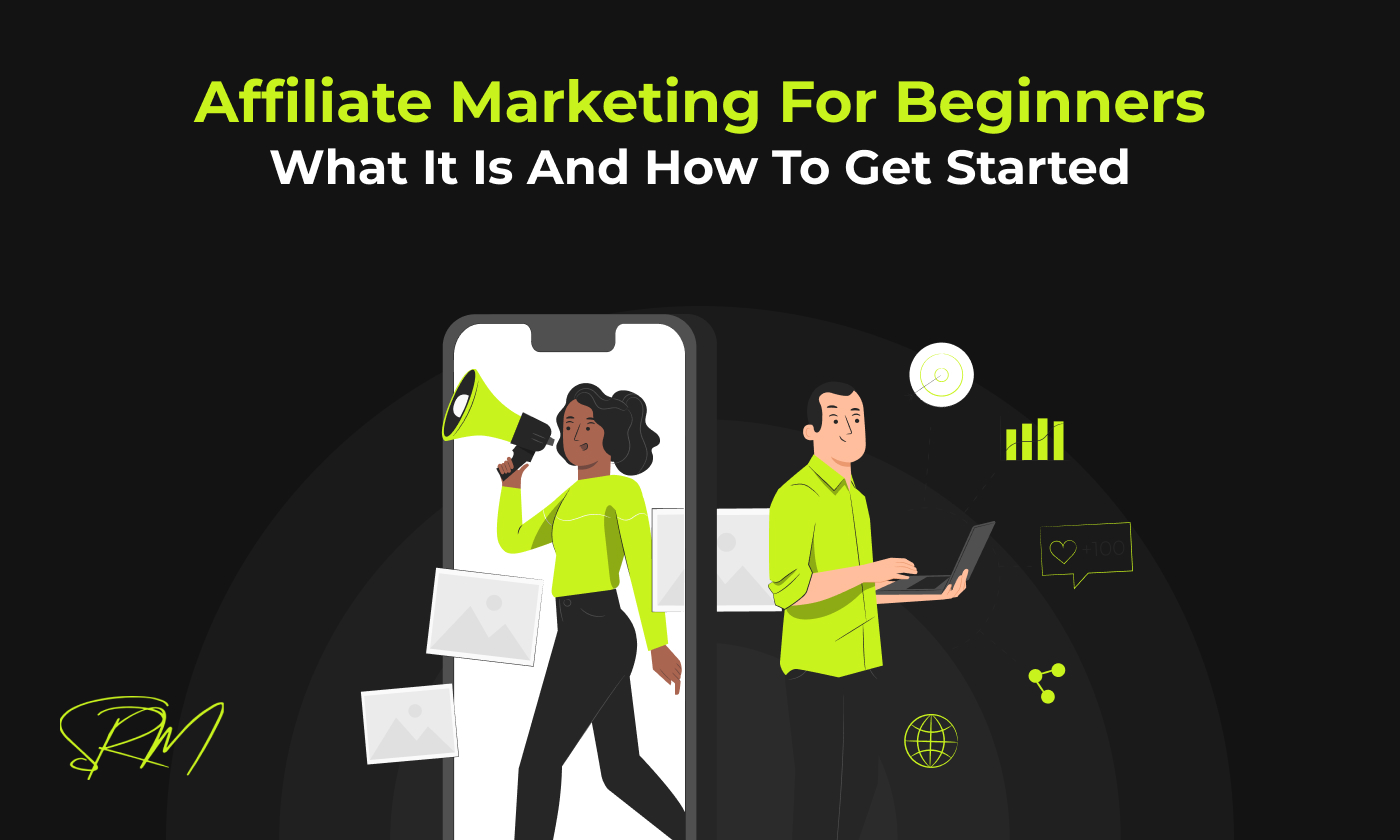
With the growing popularity of online content and digital entrepreneurship, affiliate marketing has emerged as one of the most accessible ways to make money online. People are turning their passions into profits more than ever before, and affiliate marketing is one of the most beginner friendly ways to do it. With no need to create your own product, manage inventory, or handle customer service, affiliate marketing offers a low risk entry into the world of online income. Whether you are a blogger, social media influencer, YouTuber, or someone who just loves sharing great finds, you can earn passive income simply by recommending products and services you believe in.
The best part? You don’t need a massive following or technical know-how to begin. If you can create helpful content and build trust with your audience, you’re already on the right path. In this beginner friendly guide, you’ll learn exactly what affiliate marketing is, how it works, and why it’s an ideal choice for newcomers to the online business world.
What Is Affiliate Marketing?
Affiliate marketing is a type of marketing where individuals, known as affiliates, promote a company’s products or services and earn a commission for every sale or action made through their unique referral link.
Here is how it works in simple terms:
- A business launches an affiliate program.
- You join the program and receive a special referral link.
- You promote the product or service using that link.
- When someone clicks the link and makes a purchase, you earn a percentage of the sale.
The best part is you do not have to worry about inventory, shipping, or customer support. Your role is to introduce the product and recommend it to your audience in a helpful and trustworthy way.
Why Affiliate Marketing Is Great for Beginners
Affiliate marketing is an ideal starting point for beginners because it is:
Cost effective: Most affiliate programs are free to join, so there is little to no upfront investment.
Flexible: You can work from anywhere and at your own pace.
Scalable: With the right strategy, your affiliate content can generate income long after it is published.
Diverse: You can promote physical products, digital tools, courses, and even services across different platforms.
Whether you are looking to make some extra money or build a full-time income, affiliate marketing can be a great path forward.
How to Get Started with Affiliate Marketing
Starting affiliate marketing might seem overwhelming at first, but by breaking it down into clear steps, you can begin with confidence.
1. Pick a Niche
Your niche is the topic or area you will focus on. This could be fitness, beauty, travel, parenting, finance, gaming, or anything else you are interested in.
Choose a niche that:
- Solves a specific problem or meets a need
- Has an active audience
- Offers affiliate products with good commission potential
2. Join Affiliate Programs
Once you know your niche, look for affiliate programs that match it. Here are some beginner friendly options:
- Amazon Associates: Perfect for promoting everyday products
- ShareASale: Offers access to thousands of merchants
- CJ Affiliate: Includes well-known brands
- ClickBank: Focuses on digital products like eBooks and courses
- Impact: Great for tools like Canva, Adobe, and more
You can also check the footer of brand websites to see if they offer their own affiliate programs.
3. Set Up a Platform
To promote affiliate links, you need a space where people can view your content. This can be:
- A blog or website: Great for long form content
- A YouTube channel: Perfect for reviews and tutorials
- Social media: Ideal for visual or short-form content
- Email newsletters: Useful for sharing links with a loyal audience
4. Create Valuable Content
Your content should be focused on solving problems and offering helpful recommendations. Types of content that work well for affiliate marketing include:
- Product reviews
- How to guides
- Tutorials
- Comparison posts
- Listings like “Top 10 Products for…”
When your audience finds your content helpful, they are more likely to trust your suggestions and click your affiliate links.
5. Drive Traffic
To earn commissions, you need people to see your content. There are several ways to generate traffic, including:
- Search engine optimization (SEO)
- Sharing on social media platforms
- Posting on Pinterest with eye catching graphics
- Building an email list and sending newsletters
- Collaborating with other content creators for cross-promotion
6. Track and Improve
Success in affiliate marketing depends on your ability to monitor performance and make data-driven improvements. Begin by using tools like Google Analytics to gain insights into visitor behavior, including traffic sources and top-performing content. Your affiliate dashboard also plays a key role in tracking clicks, conversions, and overall commission earnings. Additionally, platforms like Bitly allow you to shorten long URLs while providing valuable click-through data. With consistent analysis and small strategic changes, you can optimize your content and steadily grow your affiliate income.

Top Free Tools Every Beginner Needs for Affiliate Marketing
There are plenty of free tools available that can help beginners streamline their affiliate marketing efforts. These tools save time, improve content, and help you stay organized as you grow.
1. Canva
Canva allows you to design high quality visuals without needing any design experience. Use it to create blog graphics, social media posts, Pinterest pins, and more.
2. Google Analytics
This free tool helps you track how visitors interact with your site. You can see where your traffic comes from, which pages perform best, and how people engage with your content.
3. Grammarly
Grammarly checks your grammar and spelling to ensure your writing is polished and professional. It is especially useful for creating blog posts, emails, and social captions.
4. AnswerThePublic
Use this tool to find questions people are asking in your niche. It is perfect for generating content ideas that answer real user queries, which helps with SEO.
5. Bitly
Bitly lets you shorten long affiliate links and track how many people click them. Clean and clickable links tend to perform better across platforms.
6. Mailchimp (Free Plan)
Mailchimp helps you build and manage your email list. You can send newsletters, create signup forms, and segment your subscribers to improve engagement.
7. Google Search Console
This tool gives you insights into how your site appears in search results. It shows which keywords bring traffic and alerts you to issues that might affect your rankings.
8. Trello or Notion
Use a task manager like Trello or Notion to stay organized. You can plan your content calendar, track affiliate links, and set goals for your campaigns.
These tools make it easier to focus on what matters: building your audience and increasing your affiliate income.
How SEO Affects Your Success in Affiliate Marketing
Search engine optimization (SEO) plays a crucial role in the success of your affiliate marketing efforts. By optimizing your content for relevant keywords, improving page load speed, and ensuring a user friendly experience, you increase your chances of ranking higher in search engine results. Higher rankings mean more organic traffic, which translates to more clicks on your affiliate links and, ultimately, more commissions. Consistently publishing valuable, keyword rich content helps build authority in your niche and drives long-term passive income through search engines like Google.
Final Thoughts
Affiliate marketing is one of the simplest and most effective ways to start earning online income. As a beginner, you do not need to be an expert to get started. With the right mindset, a clear niche, valuable content, and some free tools, you can begin building a sustainable affiliate business. Start small, stay consistent, and keep learning. The effort you put in today can turn into passive income tomorrow.
Ready to dive in? Choose a niche, pick a platform, and take your first step. Your affiliate marketing journey begins now.



